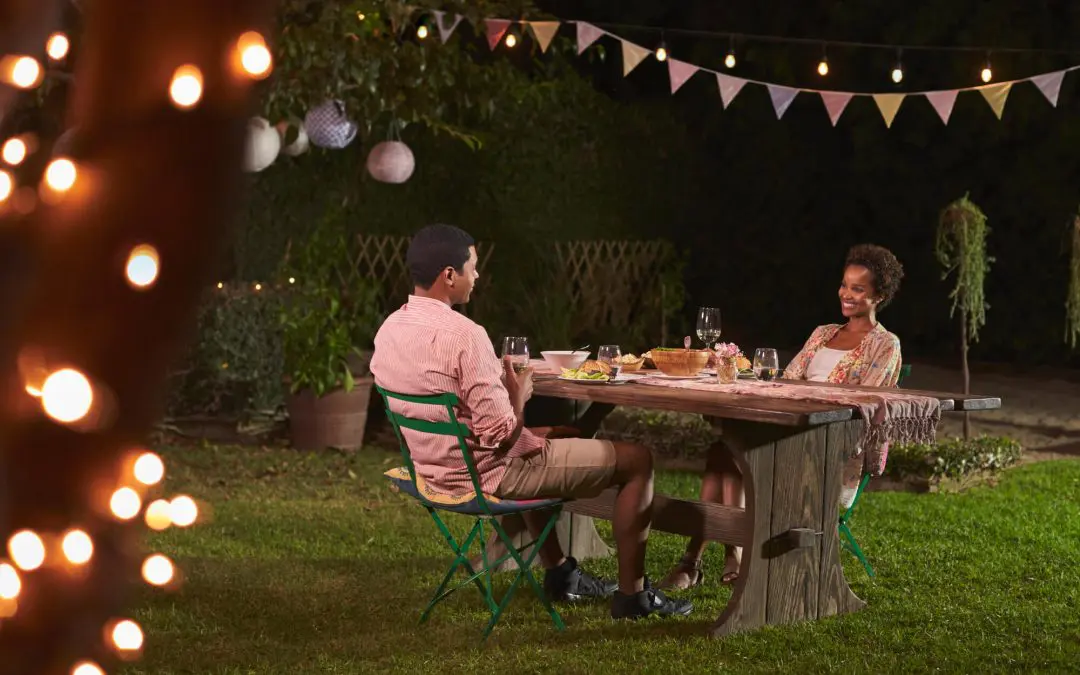Exterior lighting does a lot more than make your home look nice after dark. It adds safety, improves security, and makes outdoor spaces more inviting. Whether you’re looking to boost curb appeal, light up your backyard for gatherings, or make your walkways safer, good lighting can do the trick. With a few basic tips, you can brighten up your yard with exterior lighting and enjoy the benefits all year.
Start with a Plan for Exterior Lighting
Before you buy anything, take a walk around your property at night. Look at the areas that are too dark, spots that feel unsafe, and places you’d like to highlight. Think about how you use your outdoor space. Do you sit on the back patio in the evenings? Do guests often walk up a dark path to your front door? Do you have landscaping you want to show off?
Sketching out a rough plan helps keep you focused. You don’t need anything fancy, just a simple drawing of your yard with notes about where lighting is needed.
Use the Right Fixtures in the Right Places
Not all outdoor lights are the same. Some are designed for security, others for mood. For example, motion-sensor lights are great near garages and dark corners, while softer, warm lights work well around patios or porches.
Path lights make walkways safer, and small accent lights can be used to highlight trees, flower beds, or architectural features. Wall-mounted fixtures by doors help with visibility and add character to your home’s entry points.
If you’re lighting a larger area like a backyard or driveway, consider floodlights. Just make sure they aren’t too harsh or aimed in a way that bothers the neighbors.
Think About Color Temperature
The color of the light you choose affects how your home feels at night. A warmer light (around 2700K to 3000K) gives a cozy, inviting glow. Cooler lights (above 4000K) are brighter and work well for security, but too many make your yard feel harsh and industrial.
If you’re mixing lights, try to keep the color temperature consistent across fixtures in the same area. This helps everything look more put together and easier on the eyes.
Avoid Overlighting
It’s easy to go overboard. More light doesn’t always mean better. In fact, too much lighting can wash out your landscaping and cause glare. The goal is to create layers of light that guide people and highlight features without overwhelming them.
Use lights to create contrast. Shadows are just as important as illumination. Accent lighting should draw the eye naturally instead of pointing directly at eye level.
Choose Energy-Efficient Exterior Lighting Options
LED lights are the go-to choice these days. They use less electricity, last longer, and come in a variety of styles and brightness levels. You’ll pay a little more upfront, but you’ll save in the long run on utility bills and replacement costs.
Solar lights can work well too, especially for path lighting. Just make sure they get enough sunlight during the day to power up properly at night. For areas that need consistent lighting or brighter coverage, hardwired or low-voltage lighting is the better choice.
Keep It All Weather-Ready
Outdoor lighting has to handle the elements—rain, wind, heat, and sometimes snow. Make sure the fixtures you choose are rated for outdoor use. Look for weatherproof or waterproof labels, and check that your wiring and connections are properly sealed.
If you’re installing fixtures in areas exposed to water, like near the ground or under an overhang, go with ones that are rated for wet locations, not just damp ones.
Maintain Your Lighting
Lighting isn’t something you can just install and forget. Over time, fixtures can get dirty, bulbs can burn out, and wiring can wear down. Set a reminder to check your lights a few times a year. Clean off dirt or cobwebs, replace any flickering or dead bulbs, and make sure everything is still aimed and working the way you want.
Also, if your yard changes—like if a tree grows taller or you redo your landscaping—you may need to adjust your lighting setup.
Frequently Asked Questions on Exterior Lighting
How many outdoor lights do I really need?
It depends on the size of your yard and your goals. Start by lighting key areas like entrances, paths, and gathering spaces. You can always add more later as needed.
What’s the best type of bulb for outdoor lighting?
LED bulbs are the best choice for most exterior uses. They’re energy-efficient, last for years, and come in a variety of brightness and color temperatures.
Can I install outdoor lighting myself?
Yes, especially with solar and low-voltage lights. For hardwired systems or if you’re unsure about working with electricity, it’s safer to call a licensed electrician.
How do I avoid lights attracting bugs?
Use bulbs that emit warmer light, such as yellow-tinted LEDs. These are less likely to attract bugs than cool white or blue-toned lights.
Is solar lighting reliable?
Solar lighting works best in areas that get full sun during the day. If your yard is heavily shaded or you need brighter, consistent lighting, low-voltage or wired options are better.
Veterans First Home Inspections provides home inspections in the DC area. Contact us to request an appointment.

